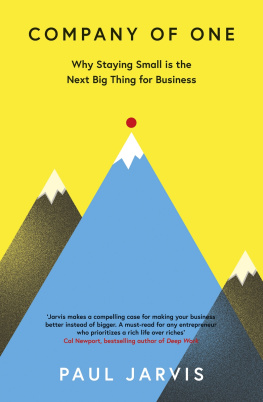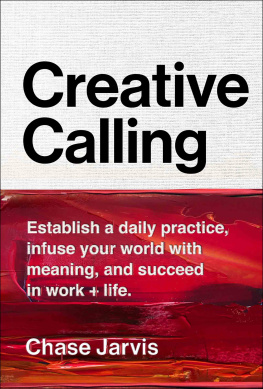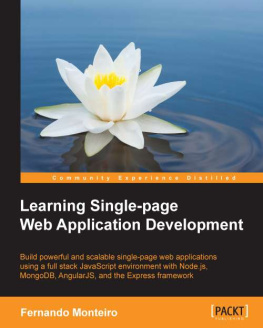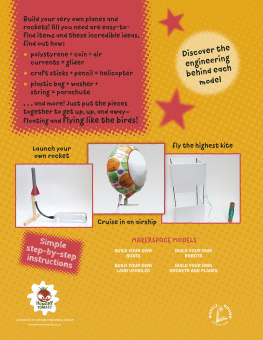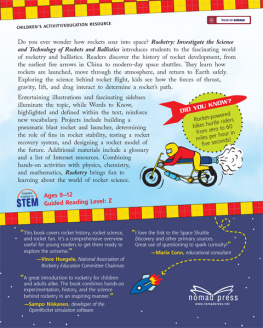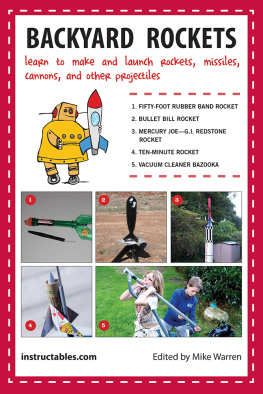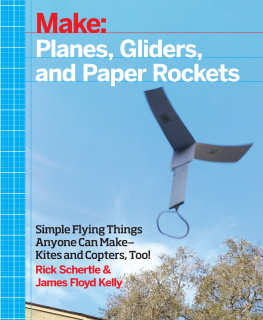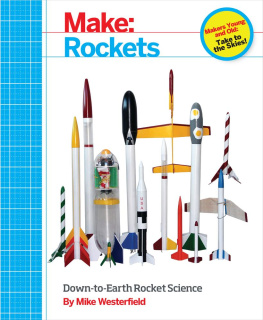


Copyright Ivy Press Limited 2009
First published in the United States of America in 2009 by Chicago Review Press, Incorporated
814 North Franklin Street
Chicago, Illinois 60610
All rights reserved. No part of this book may be reproduced or transmitted in any form or by any means, electronic or mechanical, including photocopying, recording, or by any information storage-and-retrieval system, without written permission from the copyright holder.
ISBN 978-1-55652-960-3
Ivy Press
This book was conceived, designed, and produced by Ivy Press
210 High Street, Lewes
East Sussex BN7 2NS, UK
www.ivy-group.co.uk
Creative Director Peter Bridgewater
Publisher Jason Hook
Conceived by Sophie Collins
Editorial Director Tom Kitch
Art Director Wayne Blades
Designer Lee Suttey
Photographer Andrew Perris
Illustrators Ivan Hissey and Richard Palmer
Printed in China
10 9 8 7 6 5 4 3 2 1

CONTENTS

INTRODUCTION
This book started with the simplest bottle rocket of all, made with an unadorned soda-pop bottle, some water, an air pump, and an improvised bung-and-launch stand. Even this basic model worked reliably and often flew gratifyingly high. But then we started to wonder: What if we stuck two bottles together? Or three? Or five? Added more water? And some fins? What if the rocket had a parachute? What if we used the biggest bottle we could find?
Soda-Pop Rockets is the result of these musings. There are numerous variations and developments you can make on the basic rocket; your designs can be as simple or as elaborate as you have the time and enthusiasm for. We subjected all our rockets to sustained testing at the firing range, and youll find reports and photographs of the designs in action at the end of each project. Some were sensational; some were consistent; some were unreliable; just a few refused to fly altogether (although you wont find these in the following pages). The what-if question remains, though, however many bottles we launch. Youll recognize fellow enthusiasts by the speculative looks on their faces when they encounter a soda-pop bottle under everyday circumstances.
Some Basic Physics
The physics behind how these rockets work is actually very complex. Reduced to the absolute basics, though, heres what happens when you pressurize and launch a bottle rocket.
When the bottle is partly filled with water and pressurized with air, both the water and the air are under pressure and both want to escape from the bottle. Until launch there is no way out for either. When the rocket is launched, the pressure of the air above the water forces the water out of the bottle neck. The jet of water leaving the bottle causes thrust and the bottle begins to accelerate away from the launch pad. As the water is ejected the bottle becomes lighter and accelerates faster, reaching a speed of about 55 mph (89 km/h) after approximately a quarter of a second. When all the water has been forced out of the bottle, the remaining air will also rush out, adding a little more thrust to the now-empty bottle.
Gravity is trying to stop the rocket from climbing, so the bottle eventually reaches its maximum height (called the apogee). At this point it will start to descend. The descent is slowed by air resistance on the rocket but may still be quite fast, and rockets can break upon landing. The descent can be slowed by incorporating a parachute in the design.

Safety
The projects contained within this book have been designed to be simple, safe, and fun to make and to use. However, there is always a chance of something going wrong, and the author, the publisher, and the bookseller cannot and will not guarantee your safety. Obeying the following safety points will help to minimize the chances of mishaps when you make or launch your rockets, but anything you try from this book you try at your own risk.
- The projects are intended to be made and used by adults. Minors should not make them and they should only use them under adult supervision.
- Always use bottles made out of lightweight, ductile plastics, never heavy-duty plastics or glass.
- Always check that your bottle is free from dents, splits, or other damage that may cause it to fail under pressure.
- Never use the rockets in high winds.
- Make sure your launch area is clear.
- Never lean over the rocket when you are preparing it for launch.
- Warn anyone nearby about what you are intending to fire and make sure they stay a safe distance away from the rocket.
- Never aim the rocket in any direction other than straight upward.
- Never aim the rocket at people, buildings, vehicles, power lines, or any other object, whether animate or inanimate.
- Always pressurize and launch your rocket from a safe distance.
- Never overpressurize a rocket.
- Never hold a pressurized rocket.
- It is advisable to wear safety goggles at all times when making and testing the projects.
- Check and follow all local, state, and federal regulations.
PART 1
ROCKET BASICS
This section takes you through a few straightforward rocket designs and shows you how to build two sorts of launcher: one very simple and one sturdy enough to take even the heaviest and most ambitious models from the second and third sections of the book.
Unless youre already a seasoned rocket engineer, try the most basic rocket first. Not only is it easy and quick to make, but it can also achieve surprisingly impressive results at the firing range. Then build your skills and confidence by adding the features that will make your creations look more like real rockets: fins, nose cones, and even a working parachute.

A BASIC ROCKET AND LAUNCHER
Profile
This starter project is made with a simple improvised launcher that guarantees fast and satisfying results. When you have successfully fired your first rocket, you can try a slightly more elaborate setup using the heavy-duty launcher described in project 1.3 (see ).
You will need:

- 2-liter plastic soda-pop bottle
- Duct tape
- Scissors
- Pliers
- Inner tube from a bicycle tire
- Cable tie
- Two wire clothes hangers


